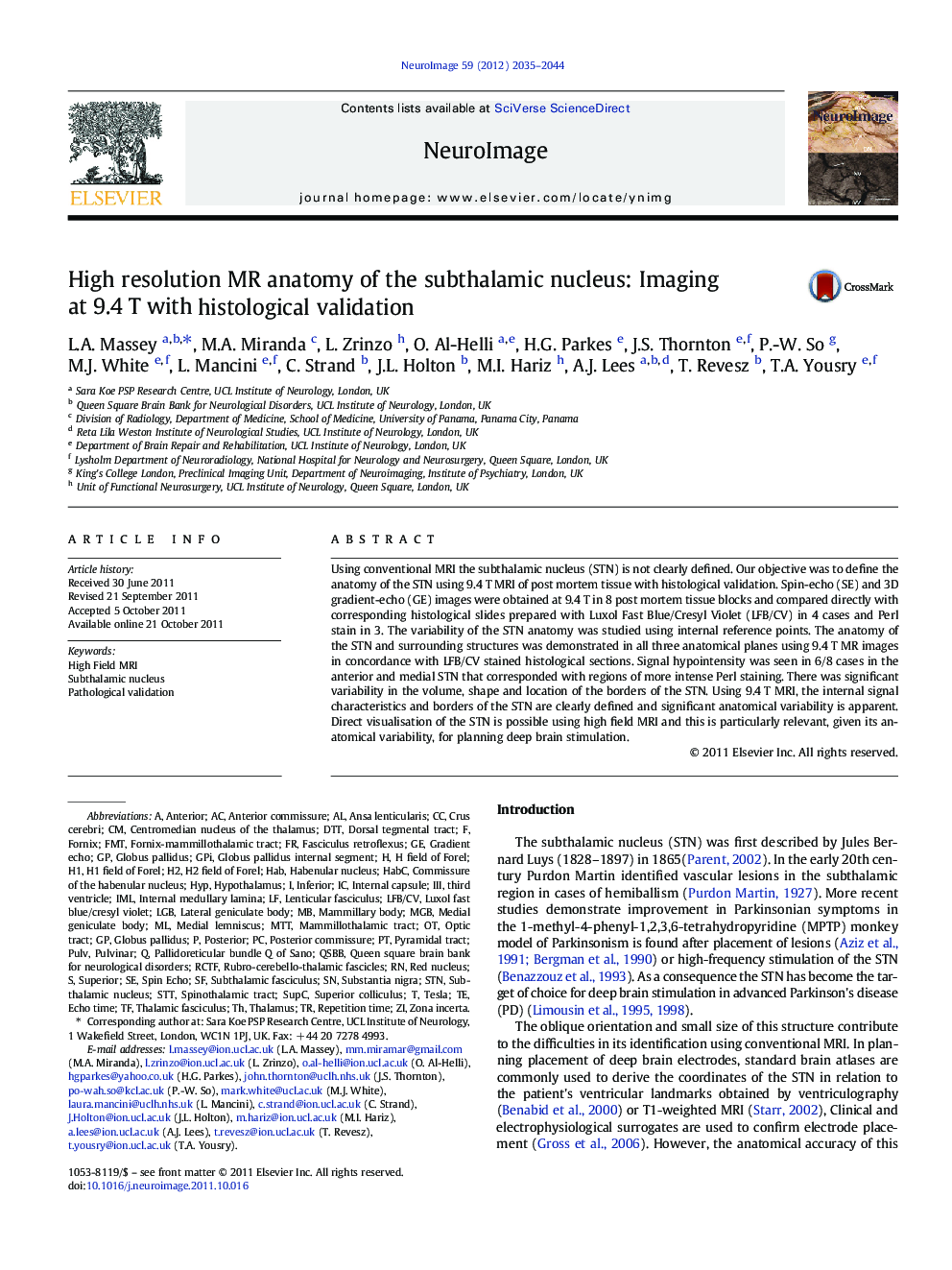| Article ID | Journal | Published Year | Pages | File Type |
|---|---|---|---|---|
| 6033404 | NeuroImage | 2012 | 10 Pages |
Using conventional MRI the subthalamic nucleus (STN) is not clearly defined. Our objective was to define the anatomy of the STN using 9.4Â T MRI of post mortem tissue with histological validation. Spin-echo (SE) and 3D gradient-echo (GE) images were obtained at 9.4Â T in 8 post mortem tissue blocks and compared directly with corresponding histological slides prepared with Luxol Fast Blue/Cresyl Violet (LFB/CV) in 4 cases and Perl stain in 3. The variability of the STN anatomy was studied using internal reference points. The anatomy of the STN and surrounding structures was demonstrated in all three anatomical planes using 9.4Â T MR images in concordance with LFB/CV stained histological sections. Signal hypointensity was seen in 6/8 cases in the anterior and medial STN that corresponded with regions of more intense Perl staining. There was significant variability in the volume, shape and location of the borders of the STN. Using 9.4Â T MRI, the internal signal characteristics and borders of the STN are clearly defined and significant anatomical variability is apparent. Direct visualisation of the STN is possible using high field MRI and this is particularly relevant, given its anatomical variability, for planning deep brain stimulation.
⺠Using conventional MRI the subthalamic nucleus (STN) is not clearly defined. ⺠On high field MRI of postmortem tissue the anatomy of the STN was clearly defined. ⺠STN borders were validated with histological sections from the same tissue. ⺠Heterogeneity in STN spin-echo signal intensity is likely due to iron distribution. ⺠Variability in STN dimensions has potential clinical significance for STN DBS.
